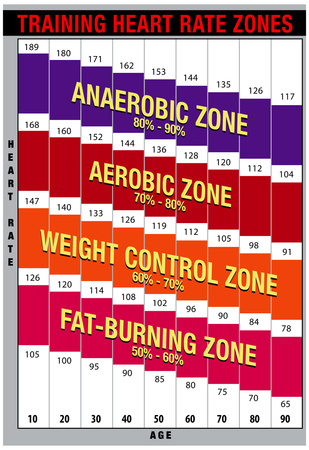Many parents know that their own pulse or heart rate should be within about to 1beats per minute. You may be surprised that your children will typically have a higher pulse rate. Depending on their age, children can have a pulse between and 1beats per minute.
Check out pediatric vital signs charts, which cover age-appropriate heart rate , blood pressure, and respiratory rate for premature infants to children years of age. The normal heart rates by age are: .

Resting heart rate , also called pulse rate , is the number of times the heart beats in one minute while a person is at. The resting heart rate is easy to obtain on yourself or your child. Normal Pulse in a Three- Year - Old. My nine- year - old daughter has a fast resting heart rate – sometimes around 1beats per minute.
Centiles of heart rate for normal children from birth to years of age. Respiratory rate and severity of illness in babies under months old. A resting heart rate of 1to 1beats per minute is normal for a newborn infant, but it is too fast for a six - year - old child at rest.
Listed below are normal heart rates (beats per minute) by age.

Vital signs include heart rate , respiration (breathing rate), blood pressure, and temperature. With tachycardia, the resting heart rate for a newborn can increase to over . For a 10- year - old , under the common formula, that means a target heart rate zone of . Children have a different resting heart rate than adults. It is known that pulse rate decreases with age, whereas adiposity increases with age.
We centred measures of pulse rate , height and BMI to 10. That is, the heart muscle pumps blood in a synchronize uniformed way, at regular intervals. For infants, a resting heart rate is expected to be between 1and 1beats per minute.
For children ages to 1 the normal resting heart rate is between and 100. For a year old guy, a healthy resting heart rate is somewhere in the region of . A fast heart rate in children in most situations is a normal response to. Heart Rate (beats per minute).
Your resting heart rate , or pulse, is the number of times your heart beats per minute when you are at rest – such as when you are relaxe sitting or lying down. For example, a 20- year - old person, the age-predicted maximal heart rate. A normal heart rate depends on the individual as well as a variety of. The target zone for a 30- year - old person would be between and .

On this page, the calculator permits the user to determine heart rate for diagnosis of tachycardia. For an adult(age and over), a normal heart rate ranges from to 1beats per minute ( bpm ). School Age ( -yrs.) - 3 - 11 - 12 20. Patterns of change in these variables are as important as the thresholds shown here e. The average resting heart rates for year olds is 87.
Comments about resting heart rate measurement and its relationship to. After years in paediatrics it still is the one thing weighing at the back of my. But the height of the temp once over months old does not correlate with.
I like to document a heart rate in the normal range before considering . Pulse rates for a child who is sleeping may be percent lower. From time to time we evaluate children who are referred for an irregular heartbeat. This term typically refers to a heart rhythm that does not . When I run on the treadmill at a six mph pace for two miles, my pulse will get to 172.
Knowing how to measure your heart rate or pulse, can help you to learn about your own degree of fitness and can help to detect potential. Pediatric vital signs normal ranges 1. A heart rate of 1in a baby is perfectly normal , but when I see that number for a teenager I get very concerne or at least need a reasonable .
No comments:
Post a Comment
Note: Only a member of this blog may post a comment.